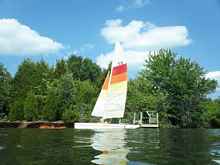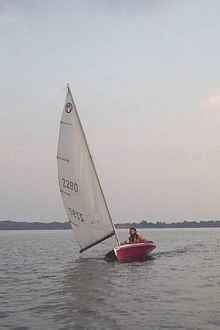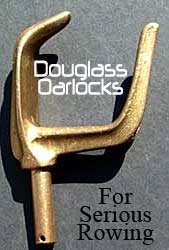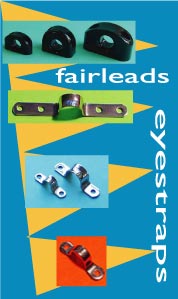How I Came to Design and Build a Cedar Strip Trimaran
To explain my motivations in the building of my boat, I must start by explaining a little bit about myself. My parents both taught English in college and high school, and my favorite subjects in high school were physics, and English. I originally went to college to study Mechanical Engineering, but ended up majoring in English. I never truly wanted to go to graduate school to pursue education, and found consistent work as a bartender in Richmond. I've always loved the outdoors. My family has camped and hiked in the White Mountains of New Hampshire many times during my childhood, and I've spent a lot of time backpacking and hiking in Virginia's Appalachian Mountains. My dad bought an Old Town Camper 16 foot canoe when I was young, and eventually I "borrowed" it from him to begin using on my own. I have taken it all over the James River to birdwatch with like-minded friends, and eventually three years ago in April planned a canoe camping trip to Virginia Beach's False Cape State Park, a narrow strip of land sandwiched between Back Bay and the Atlantic Ocean. No roads go between the campground and parking lots, so to reach the campsite you must either travel along the beach, or by boat along Back Bay (or presumably the ocean on the other side). The canoe paddle there was delightful. Sunny, calm, and pristine. We camped two nights, but as we prepared to paddle back on the third day, the winds were picking up. As we put the boats in the water, clouds assembled in the west. We figured we'd stick close to shore and push through. My friend's Coleman canoe had three paddlers and a long narrow keel (formed around an aluminum stringer), while my Old Town Camper had a flat bottom and two paddlers. Through the six miles back in the wind and waves, I noticed his boat to track straighter than mine. But more so than that, I struggled against the energy of the wind the whole time. It was like being bombarded with the idea that this energy could be harnessed, could be assisting the traveller rather than hindering him. Of course sailing is not new to the world, but it was a new concept to me in that moment, and upon returning to shore and packing everything up for the trip back to Richmond, I began dreaming of harnessing the wind, of sailing.
My first inclination was to build a removable sailing rig for my canoe. My tools were a miter saw and a cordless drill, and my experience consisted of cutting apart 2x4s, and screwing them back together. I researched online, and the method of stitch-and-glue seemed to be appropriate for a beginner, and to produce a relatively quick-to-build hull shape. I guessed at dimensions, used cheap plywood and lumber from the the hardware store, and cobbled a clamp-on cross-deck with a mast-stepped steel fencing tube, and four foot long stitch and glue outriggers.
 |
In the picture, that's me manning the electric motor. You can see the outriggers pretty clearly. The boat so rigged was time-consuming to set up at the shore, dubious on most points of sail except directly downwind, and though the outriggers did provide stability, they could have been much longer and much more buoyant. Eventually, a strong gust destroyed my flimsy mast step, and I figured my best chance at sailing a boat properly would be to sail a sailboat designed by a professional. I bought a Nacra 5.0 beach catamaran with trailer, fixed it up a bit, and sailed on it about 7 times during the summer after my False Cape trip.
 |
Here you see the Nacra at Lake Anna. It was a lot of fun, but my car at the time was questionable at towing, and storing a trailered boat was a bit of a challenge in my yard. One day my roommate accidentally threw a firewood log into the side, piercing a hole in the hull. I was initially upset, but looking back, that initial fiberglass repair opened my mind to the possibilities of fiberglass. I live in Richmond, so going to appropriately open areas to sail this boat meant traveling around an hour or more each way, and consequently I did not sail it as often as I wanted. I sold it at a slight profit, and used the money to buy two small wooden boats - a Classic Moth and a Mirror Dinghy. Having familiarized myself with fiberglass repair on the Nacra, I was beginning to become comfortable with the workings and construction of wooden boats with the Moth and Mirror. I cherish every moment I've had sailing on those two little boats.
 |
This is a picture of me on that Mirror dinghy on the James River. It was slower than the catamaran, but the delightful experience it provided certainly ameliorated what it lacked in speed. The boom could be tied off with the gunter gaff, and lifted with the sheet to clear the cockpit for rowing. The rudder kicked up, and the daggerboard could be lifted for shallow draft. That boat was extremely stable. The first time I sailed it after buying it, a friend and I took it out on the York River in what we later found out was a small craft advisory - hiking out and unreefed, the boat flew, and never once felt out of control. My love of sailing, and perhaps that experience, infected my friend, and he found and bought a Classic Moth. We found another Moth on Craigslist, and I bought it so we could more closely sail together when we were out on the water.
 |
Here is that Moth. It was more heavily canvassed than the Mirror, and even though it had no jib, it sailed close to the wind. It was far less stable, but more exciting in lighter wind than the Mirror. I began to think the Mirror would make a great single person micro cruiser, while the Moth was more of a light-air deeper-water competition boat, faster, but less comfortable, less stable, and harder to land and launch.
Sailing on these boats taught me a lot. I wanted to be on the water without a lot of hassle, so I was forced to come up with a method of transporting the boats without a trailer, and also to become a more experienced sailor, often learning through error as much as information and technique gleaned on the internet.
I often found my experience on these boats to be just somewhat lacking - I had them because they were available, not because they were exactly what I wanted. I liked that they were small enough to be transported on the roof of my car, but I didn't like that it was difficult to accommodate multiple passengers. On such a small boat, I'm sure you know you can quickly strain your friendships barking orders to your comrade in a gust about which line to pull or release, and where to put his or her weight. I liked how my canoe was easily paddled while facing forward, a trait absent from both Moth and Mirror. Launching and landing from a beach, at least in the Moth, were often frustrating. After spending time in both wooden boats, I began to think I could build a boat that was perfect for me, or at least one where I made the design choices to accommodate the experience I wanted. I thought back to that initial canoe trimaran, and how sailing on the catamaran was exhilarating and fast. I spend endless hours poring through the many articles and forum posts comparing and contrasting hull designs and construction methods on sites like Duckworks. Eventually, I felt like the virtues of the cedar strip construction method outshone others. I love the look of so many glue lines, of so many pieces of wood perfectly mated together. I also felt that with great support online and the familiarity with epoxy and fiberglass gleaned from repairing the catamaran, I could somehow tackle such a feat.
|










